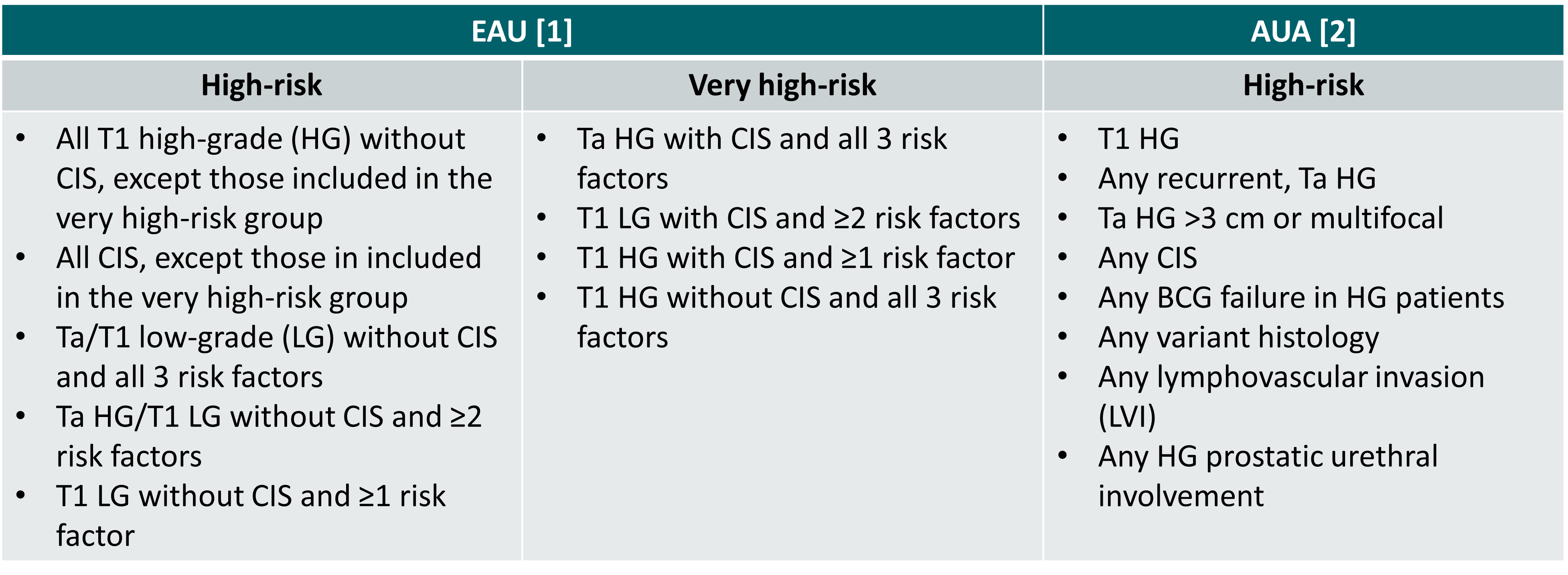Bladder cancer
Challenges in high-risk NMIBC
Objectif pédagogique: Gain insight on individual treatment strategies for (very) high-risk non-muscle-invasive bladder cancer (NMIBC) in Bacillus Calmette-Guérin (BCG) naïve patients and after BCG failure.
Spécialité: Urology, Medical oncology
Public cible: CME (basic, intermediate), Residents (senior)
Dernière mise à jour: May 2022
Contexte:
The EAU and AUA/SUO guidelines recommend the stratification of patients with NMIBC into risk groups based on their probability of progression to muscle-invasive disease [1,2].
The EAU risk stratification consists of 4 risk groups (low, intermediate, high and very high) and takes into account, on top of stage and grade, the following clinical risk factors [1]:
- Age >70 years
- Multiple papillary tumours
- Tumour diameter >3 cm
Meanwhile, the AUA risk stratification for NMIBC consists of 3 risk groups (low, intermediate and high) [2].
(Very) High-risk NMIBC according to the EAU and AUA guidelines

Regulatory approval status of drugs for high-risk BCG-unresponsive NMIBC (status 1 December 2021)

- Babjuk M, Burger M, Compérat E, et al. European Association of Urology (EAU) guidelines on non-muscle-invasive bladder cancer (TaT1 and CIS). Update March 2022. Available at: https://uroweb.org/guideline/non-muscle-invasive-bladder-cancer/
- Chang SS, Boorjian SA, Chou R, et al. Diagnosis and treatment of non-muscle invasive bladder cancer: American Urological Association (AUA)/Society of Urologic Oncology (SUO) guideline. Update 2020. Available at: https://www.auanet.org/guidelines/guidelines/bladder-cancer-non-muscle-invasive-guideline
